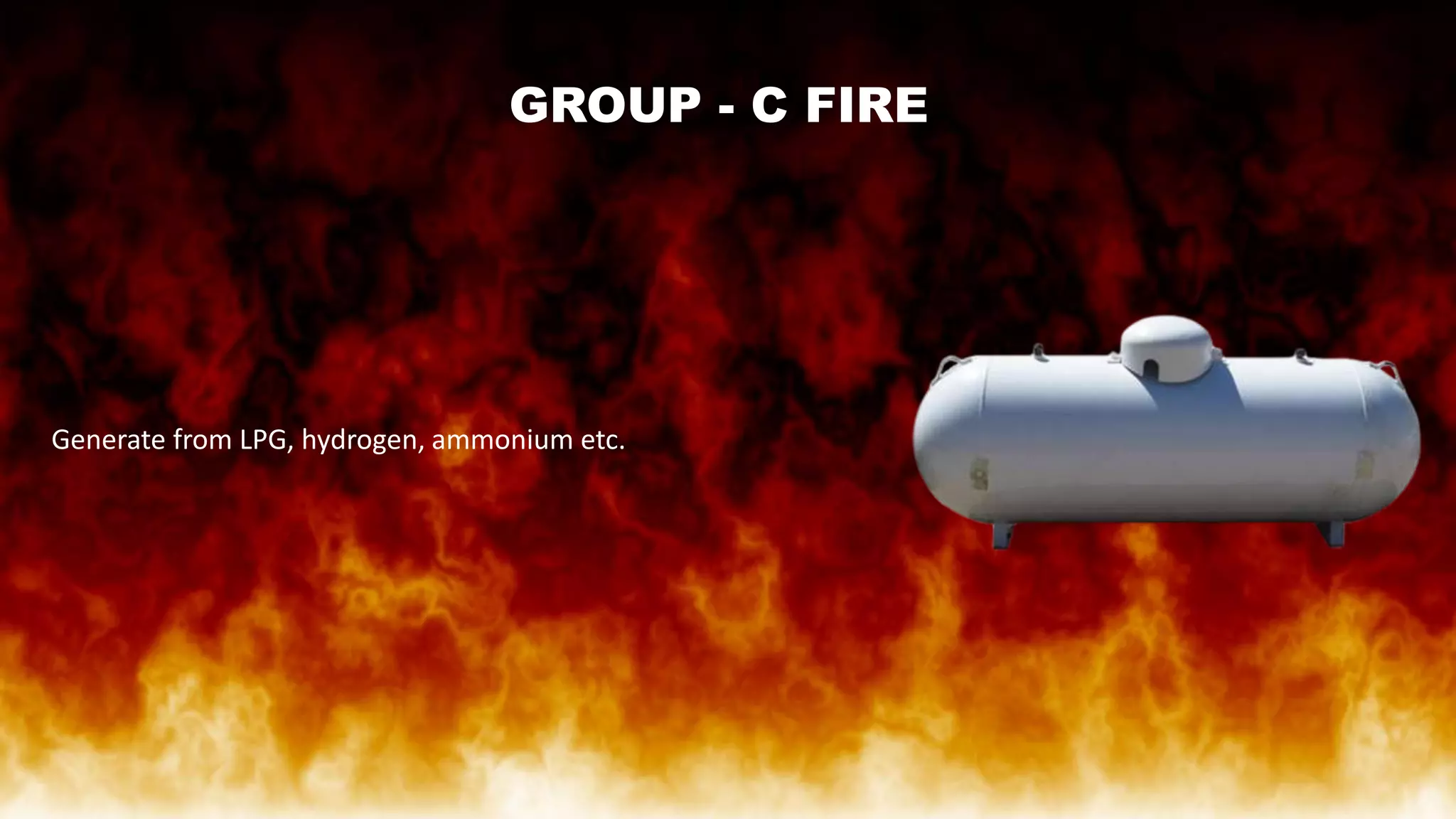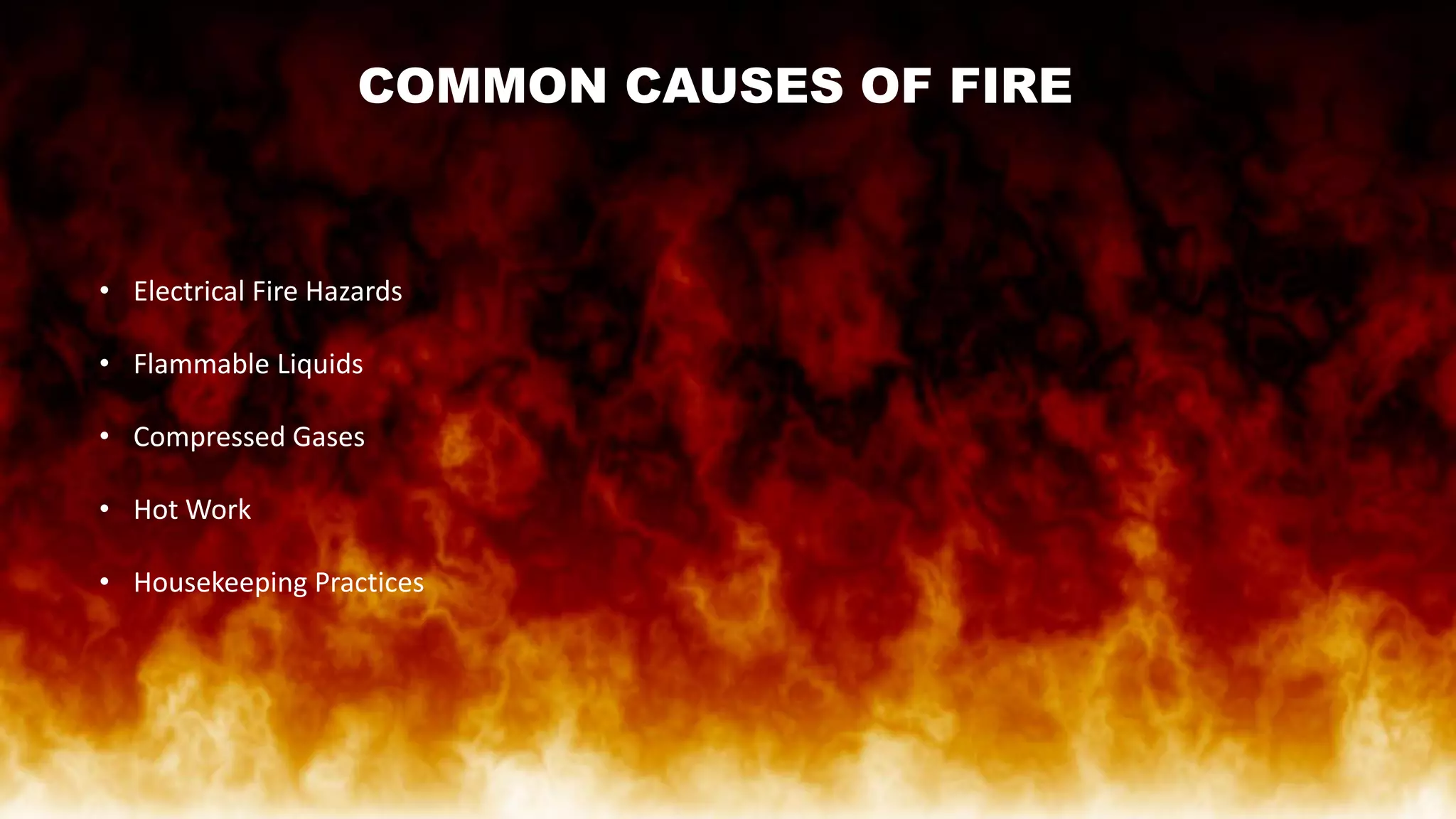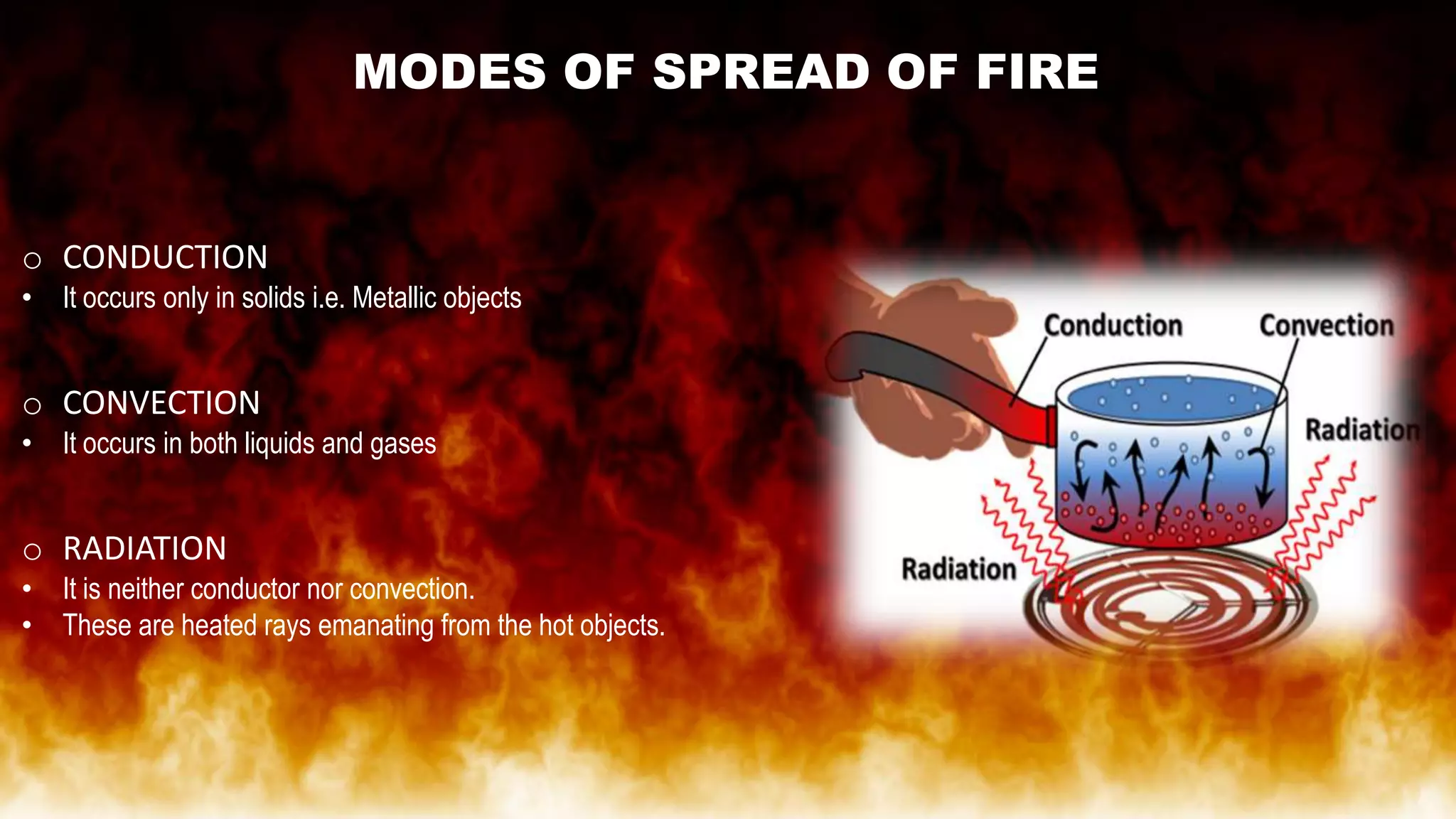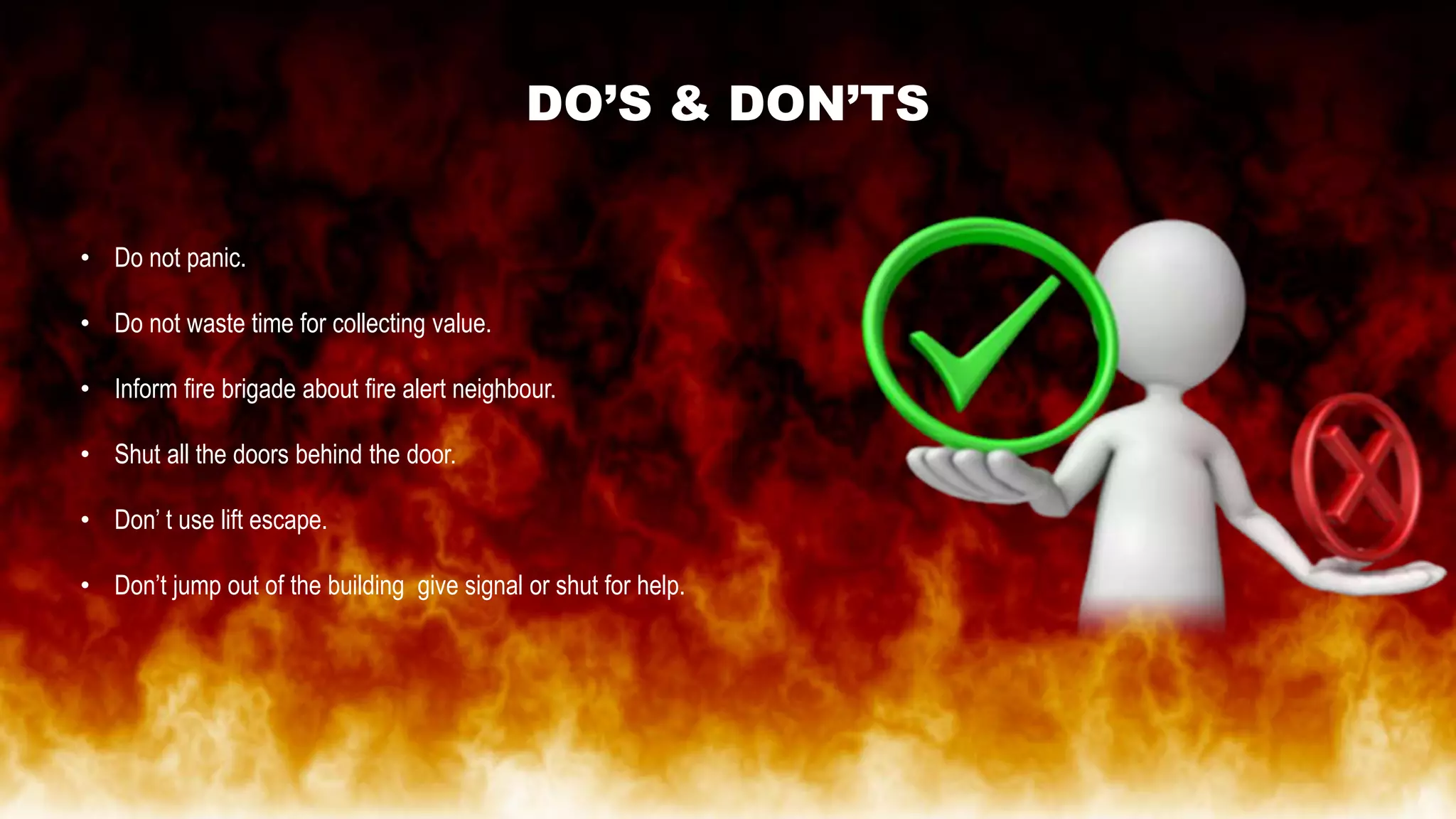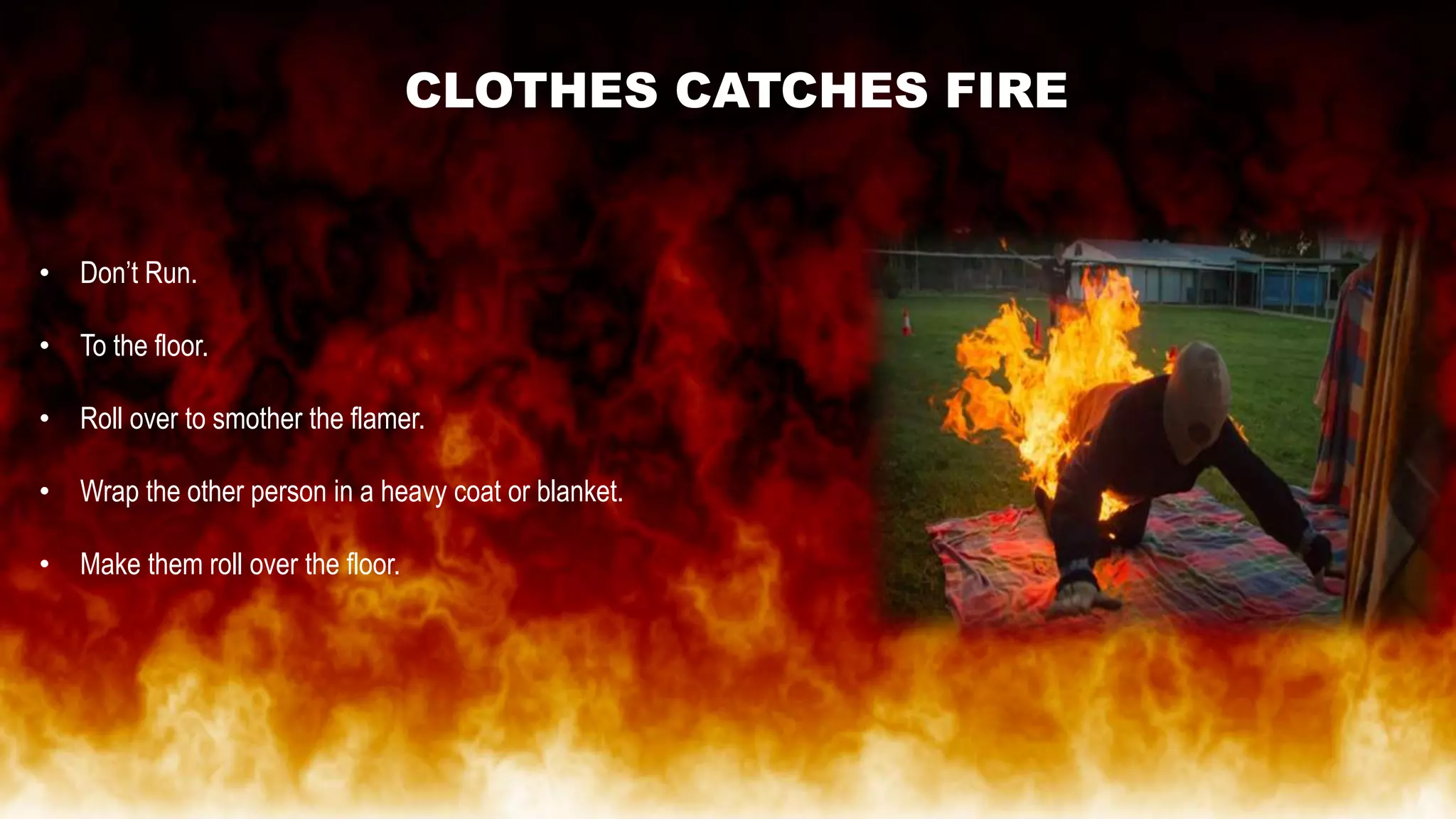The document outlines fire fighting techniques and fire safety in industries, categorizing fire types into five groups based on their sources and specific hazards. It emphasizes the common causes of fires, recommended safety practices, and guidelines for emergency response, including proper use of fire extinguishers. Additionally, it highlights the importance of maintaining a clean work environment and preparation for fire emergencies through drills and awareness of fire exits.





